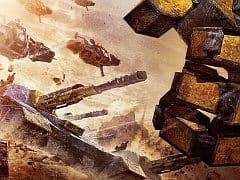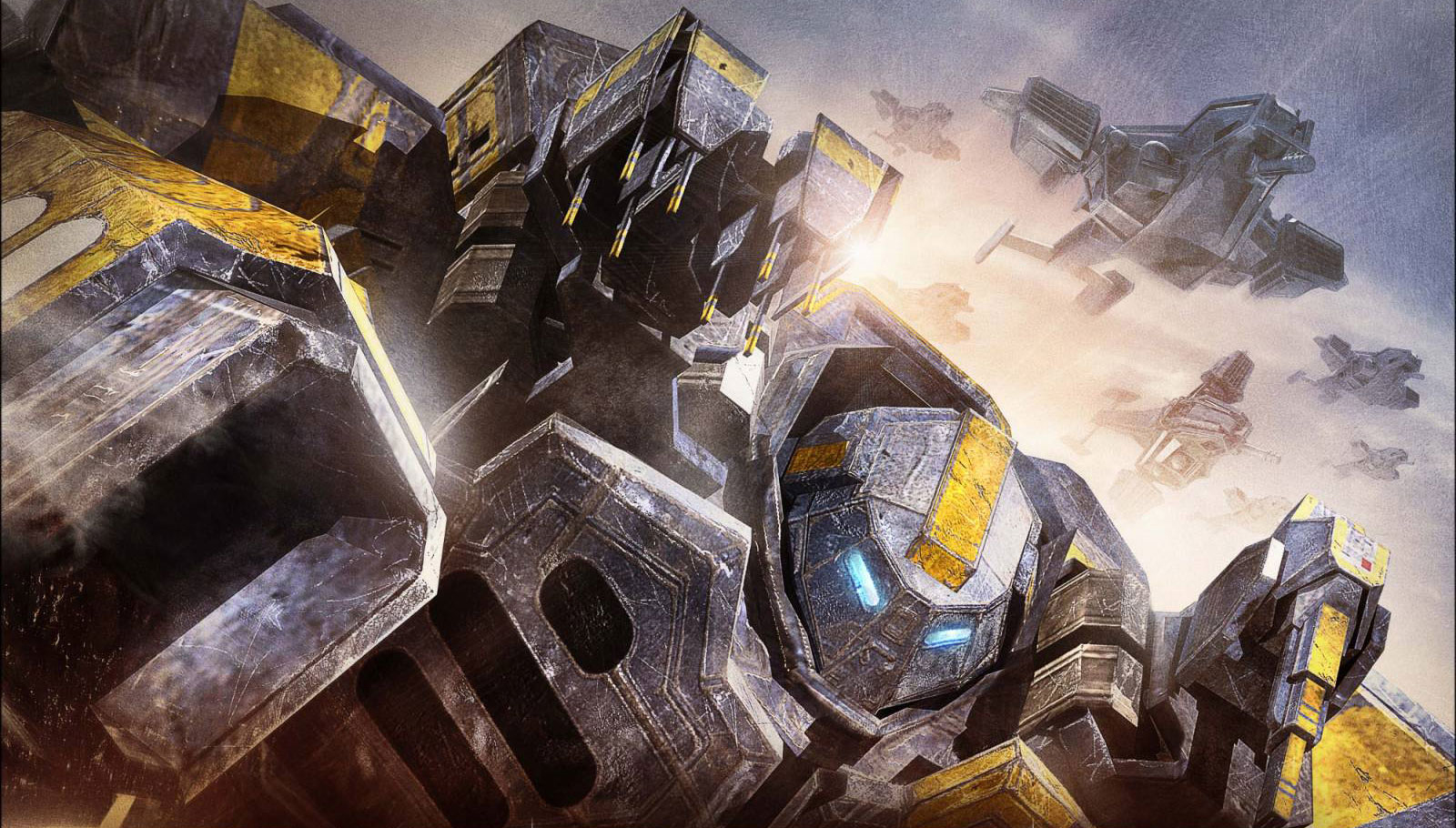You can trust VideoGamer. Our team of gaming experts spend hours testing and reviewing the latest games, to ensure you're reading the most comprehensive guide possible. Rest assured, all imagery and advice is unique and original. Check out how we test and review games here
The real-time strategy genre is in a state of flux. The old ways – the mind-bending resource gathering, complex base-building and gargantuan army management of yesteryear – are falling out of favour with modern tastes. Replacing them are squads of units, levelling up and fast-paced, story-driven action pioneered by the likes of Relic’s Company of Heroes and Dawn of War series. “The Times They Are A-Changin’.”
And so is Supreme Commander, for many the last bastion of the hardcore RTS. With the upcoming sequel, due out next month on PC and Xbox 360, developer Gas Powered Games is affecting a change that should make the over-the-top sci-fi metal on metal smash-em-up more palatable to modern tastes. But, and this is an important but, Gas Powered Games is doing it without compromise.
So, while the number of units you have to play with has been reduced, the scale of Supreme Commander 2 still stands out as huge. Resource gathering – in this case extracting “mass” – is an easier process, but by virtue of it merely existing, the game differs in comparison with so many recent rivals. The same can be said for base building – again, streamlined – but at a time when so few RTSs even have base building, SupCom’s spirit is still strongly felt. In short, SupCom 2 is still SupCom. There’s no need to panic.
For example, SupCom’s trademark “Strategic Mode” has been faithfully retained. In the game, scrolling down with the mouse wheel zooms out, as it does in all RTS games, but you can keep on going… and going… and going… until your units are mere blue blips and missiles are nothing more than slow-moving pixels. As your base and army grows and the battle expands to span multiple fronts, SupCom 2’s strategic brilliance comes to the fore. At a time when the genre seems obsessed with reducing the number of units players control, Gas Powered Games has been brave enough to stick to its guns.
Really, there’s nothing quite like Supreme Commander’s Strategic Mode. The feeling is one of desensitisation; it’s a minimalist aesthetic – certainly basic in graphical terms – that rekindles memories of Introversion’s Defcon and Modern Warfare’s iconic AC130 gunship level. When you zoom in for a spot of micro-management – really just to check everything’s going according to plan – the destruction can shock. For some reason death doesn’t seem real when you’re thousands of miles up. Up in the clouds, being a supreme commander feels like you’re playing a video game.
In short, SupCom 2’s fundamentals mirror the first game’s. You begin a skirmish or multiplayer match with an Armoured Command Unit (ACU) – basically a building-sized mech – and two engineers. You’ll normally be near some “mass deposits”, which provide you with mass, the game’s currency. To gather the resource, all you have to do is order your ACU or one of your engineers to build a “Mass Extractor” on the deposit. Building a few “Energy Generators” then provides you with the power to keep everything up and running. In the blink of an eye, you have an economy. Simple.
From there, you have a clear choice: which of the three factories should I build? One of SupCom 2’s more interesting features is that you can build all three types of units from the get-go. The Land Factory produces Rock Head Tanks and Titan Assault Bots, for example (if you’re playing the United Earth Federation faction), whereas the Naval Factory produces ships (unless you’re playing the Illuminate faction, which doesn’t have access to sea units). Or, you could build the Air Factory, which produces flying death dealers. This early and influential choice allows you to quickly tailor your overarching strategy to combat your foe.
Perhaps the best example of how the finer details of army management have been made more comprehensible is with the improvements made to that most basic of unit: the engineer. If set on “Patrol Mode”, they’ll potter about repairing your units and structures as and when, and harvest scrap metal. It’s all automatic, so you don’t have to fumble about with micro-management. Brilliantly useful.
Layered on top of your base and army building is an upgrading system that works similarly to RPG tech trees. Here, you spend points in one of five areas: land, naval, air, ACU and structure. Advancing down these tech trees is essential to success – the most powerful units, the eye-catching “Experimentals”, only become available once you’ve spent a considerable number of points in one of the five paths (you can pump them out half finished if you’re short of time, but they’re likely to malfunction). The point, again, is that it’s quick and easy to see what leads to what, and what benefits your choices will have; an important mechanic made easy.
These days, a strong single-player (or indeed co-op) story campaign is key to any successful RTS, and Gas Powered Games knows it. SupCom 2 begins 25 years after the events of standalone expansion Supreme Commander: Forged Alliance. Three factions are playable across the 18 missions: firstly the United Earth Federation, then the religious Illuminate, and finally the tech-obsessed Cybran Nation. The UEF campaign begins with the player in control of an ACU driven by veteran soldier Dominic Maddox. The Cybran invade, and it’s your job to fend them off as you learn the game’s ropes.
Eventually, you’re ordered to purge an Illuminate colony. The only problem is, Maddox’s wife and kid, who are Illuminate themselves, live smack bang in the middle of the UEF’s targeting reticule. Cue a refusal to follow orders, a fight for survival and a three way war between enormous mechs, robot dinosaurs and teleporting UFOs.
It’s all predictable pantomime stuff. The human interest narrative is mindless enough to keep you occupied in between the carnage, at least for the first quarter of the game, but the production values aren’t up there with the likes of Dawn of War II or, certainly, the upcoming StarCraft 2, and the voice acting and cutscenes aren’t particularly inspiring. But Gas Powered Games is keen to stress it’s improved the single-player side of SupCom 2. Our hands-on shows better work has been done, but the campaign will still struggle to stand out, as it so often does in the RTS genre. In reality, many of its fans won’t care – multiplayer and online leaderboards are still the focus.
SupCom’s sheer scale should stand it in good stead. In 2010, it feels even more unique than when the series debuted in 2007. It’s an intriguing proposition: as addictive, tactical and huge as before, but more accessible. That word will no doubt give some “the fear”, but really there’s nothing to worry about. As the World War II poster said: “Keep calm and carry on.”
Supreme Commander 2
- Platform(s): PC, Xbox 360, Xbox One
- Genre(s): Real-time, Simulation, Strategy

/https://oimg.videogamer.com/images/65f2/supreme_commander_2_28.jpg)
/https://oimg.videogamer.com/images/7bd2/supreme_commander_2_21.jpg)






